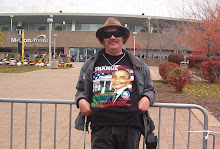To fully understand the symbolic character of ‘the Boulevard,’ one must understand a bit about the geography and history of River Isle, the fictious, middle-sized, Midwestern, manufacturing city in which much of the action of my novel, Sweetheart of the Lonesome Boulevard, takes place.
River Isle sprawls over two sides of the Elm River. On the left bank (East side) lays the central business district, most of the significant commercial establishments, and middle-class residences. Opposite, on the west side, are the factories—making processed meat, breakfast cereal, farm machinery, chemical sweeteners, steel castings, etc.—and ‘Hunkeytown’ where dwell the descendants of Slavic immigrants who provide the labor that keep the factories running. In the middle of the Elm is the mile-long, canoe-shaped Island, the site of the art-deco monstrosities of City Hall, the Elm County courthouse, the Federal Building, Allies Coliseum, the Jail, and the Potter’s field.
The Boulevard, in the parlance of my youth, is the ‘main drag’ of River Isle. The urban congruence of a triple-digit federal highway, it runs from the Aladdin ballroom (just outside the eastern limit of the town) through east side and downtown, across the island and two channels of the river, traversing the factory district and Hunkeytown, and on past Kottmann’s junkyard and Kitty’s Kat Klub at the extreme western limit of River Isle, at which point it becomes Highway 317 once again.
Pick any point in River Isle: call it point A. Pick any other point and call it point B. Most likely, you can’t get from point A to point B without traversing at least part of the Boulevard. If you could, you wouldn’t want to: it would be too boring, because all the life of the town is concentrated along the Boulevard.
It all goes back to Harvey Langsam, horse-thief, slave-thief, militia deserter, who, in the 1830’s blazed a trail through the virgin forest with a Sac and Fox wise man and Kickapoo lover and settled on the Island. Other settlers came later, found Harvey very much not to their taste, and ran him off further westward. By way of atonement, they named the path he had made ‘Langsam Boulevard.’ That’s the source of what Dorf, the very 20th century narrator of most of this involved tale, initially thinks is a weak pun: the lonesome Boulevard.
But it’s not a weak pun, is it? Because all day and way into the night they go up and down on the Boulevard, don’t they, the workers and idlers alike. Teenagers ‘shoot the B’, driving back and forth from the Aladdin to Kottmann’s and back, and all over again, and again, and again. Traffic on the Boulevard is aimless, without purpose, as lonesome people drive isolated in their self-enclosed vehicles from one end of this symbolic thoroughfare to another. This ten-mile strip of concrete holds the town, middle-class east side and working-class west side, together, even as it isolates each and every individual who must live within its clearly defined—yet universal—limits.
At the center of this novel, Sweetheart of the Lonesome Boulevard, is the quintessence of lonesomeness, symbolized by the Boulevard itself. Aimless driving, back and forth and back again. So what, in the way of redemption, does the Sweetheart offer? I shall discuss this in my next post.
Peace,
David P. van
Saturday, September 12, 2009
Why this Book (Part 5)?
Subscribe to:
Post Comments (Atom)


No comments:
Post a Comment